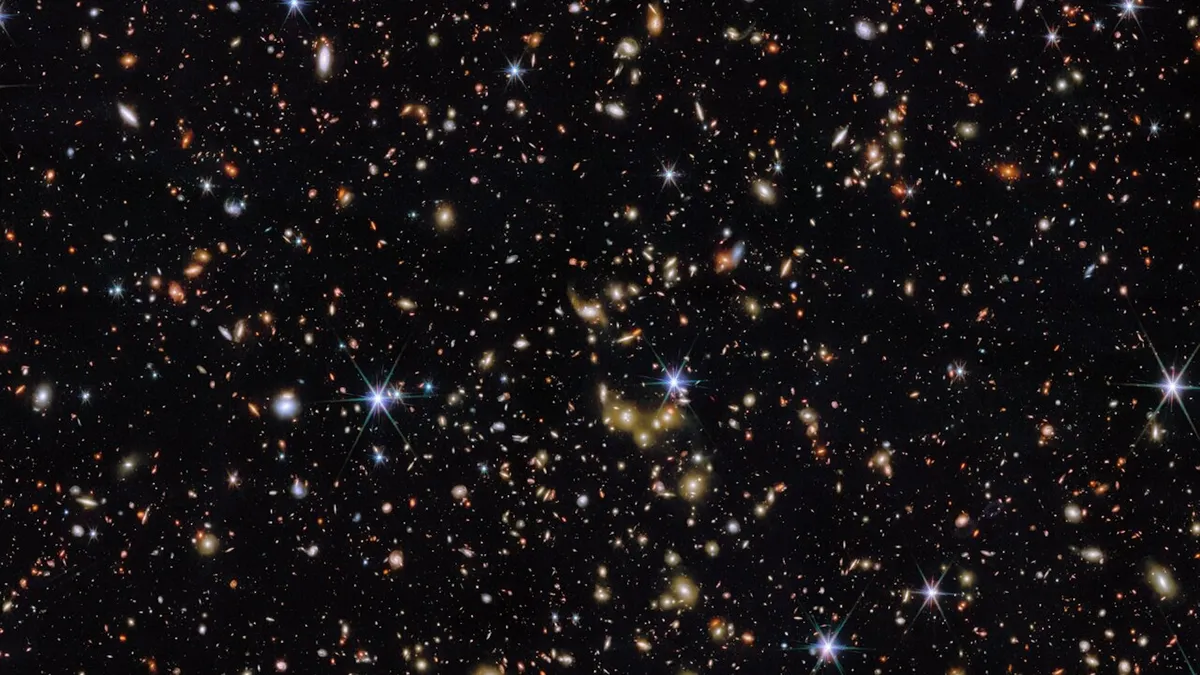
In a groundbreaking discovery, astronomers have identified thousands of galaxy groups located an astonishing 12 billion light-years away in the small constellation of Sextans. This remarkable finding was shared on April 29, 2025, and it offers profound insights into the early universe, which is estimated to be 13.8 billion years old.
The James Webb Space Telescope (JWST) has been pivotal in this discovery, enabling scientists to explore regions of the night sky that are less influenced by the Milky Way. Positioned adjacent to the constellation Leo, known for its abundance of galaxies, JWST has revealed extraordinary details about the distant universe. In the constellation Sextans, astronomers detected groups of galaxies that provide a glimpse into the universe during its infancy.
According to NASA, galaxies, much like moons and planets, are gravitationally bound to one another, forming groups and clusters. The recent sample of 1,678 galaxy groups represents the largest collection ever identified, allowing astronomers to better understand the structure and evolution of the early universe. These findings are critical for answering questions about how galaxies have transformed over the past 12 billion years.
Early galaxies exhibited irregular shapes and were prolific in star formation, contrasting sharply with later galaxies that present more symmetrical forms, such as elliptical and spiral shapes—like our own Milky Way. Ghassem Gozaliasl, a researcher in astronomy at Aalto University and head of the galaxy groups detection team, stated, “Groups and clusters are really important because within them galaxies can interact and merge together, resulting in the transformation of galaxy structure and morphology.”
These ancient galaxies serve as laboratories for astronomers to study phenomena such as dark matter, supermassive black holes, and the intergalactic gas that exists between galaxies. This research is crucial for understanding not just the past of the universe but also its future.
NASA has a rich history of utilizing its space telescopes to capture deep field images of the universe. The first notable endeavor was the Hubble Deep Field in 1995, which revealed around 3,000 distant galaxies. Following this, the Hubble Ultra Deep Field in 2004 showcased nearly 10,000 galaxies, some dating back to when the universe was just 800 million years old. The Hubble eXtreme Deep Field further expanded our knowledge by uncovering 5,500 galaxies up to 13.2 billion light-years away.
Since its launch, the JWST has surpassed its optical predecessor, Hubble, by capturing unprecedented deep field images. In 2022, it unveiled its first deep field of the galaxy cluster SMACS 0723, as it appeared 4.6 billion years ago, marking one of the deepest and sharpest infrared images of the distant universe. In February 2023, JWST continued to impress with a deep-field image of Pandora's Cluster, further solidifying its role in advancing our understanding of cosmic history.
Overall, the discoveries made by the James Webb Space Telescope are not only expanding our knowledge of galaxy formation but also reshaping our understanding of the universe itself.